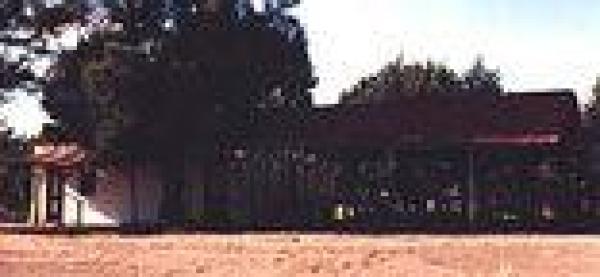The town had its start in 1848 when sir Harry Smith, governor of the Cape Colony, laid the foundation stone for a church planned as the focal point of a town north of the Orange River, to be named in his honour.
The site was the farm Waterval of C.S. Halse, 24km south-west of the present location of the town. Residential stands were auctioned on 1 December 1848 but no one wanted to buy one; prospective residents were aware there was very little water in the neighbourhood. In November of the following year, erven were sold on the farm Rietpoort.
Smithfield became a municipality only in 1948 although its first village board was constituted back in 1860.
The Smithfield district was the scene of much fighting between the early Free State settlers and the Basotho under Moshesh.
The area also featured in British attempts to forge peace between these warring factions.
In 1855 the village, barely six years old, was chosen as the site of a peace parely between Moshesh and Sir George Grey, governor of the Cape Colony, who acted as mediator. The truce did not last long.
Activities
Basotho War Memorial
In memory of those who lost their lives in that war, in front of the City Hall.
Birthplace of Christiaan de Wet
(1854 - 1922), on the farm Leeukop. The house has been declared a National Monument.
Bushman Rock Art
Various sites on the hill surrounding the town.
Caledon River Museum
Exhibits include a display in memory of General Christiaan de Wet (1854-1922), an 18th century kitchen and the wool washery dating back to 1866 and `Old Grietjie' , a muzzle-loading ship's cannon used in most of the wars against the Basotho.
Market Square
A wooden structure almost hidden in the corner of a large, empty stand is another reminder of an era gone by.
Old School Building
The first school in the Orange Free State was established here in 1848. The school building, erected in 1850, still stands today and is the home of the museum curator.
The Robertson War Memorial
A few kilometres outside the town, the interested visitor will find the remains of the rather unique Traacha Wool Washing Works. All that remains of this once active industry is a crumbling brick tower.
Established in 1874 as a wool-washing works and wheat mill, a thriving wool-washing business was run at Traacha which was almost certainly the only one of its kind in the Free State. It was known for the high standard of its washed wool. In 1894 the farm was sold; the works have been standing vacant since then.
Carmel Missionary stations
A former Mission Station.
Beersheba Farm
A former French Mission, the farm is notable for its impressive farmstead, whose 1m-thick walls surround 18 rooms.
Karoo House
Which is a National Monument, now a guesthouse.





